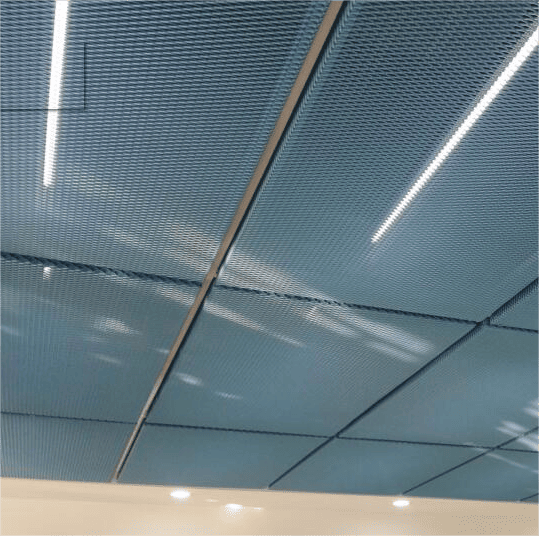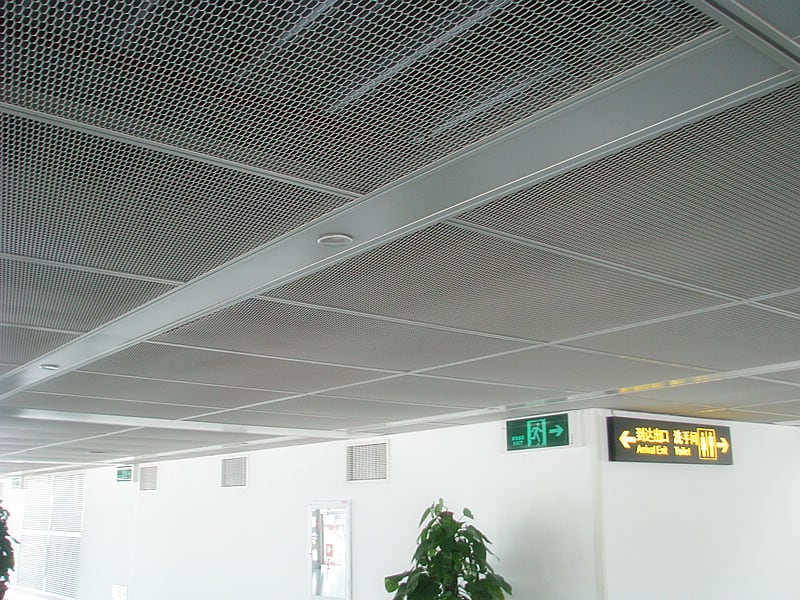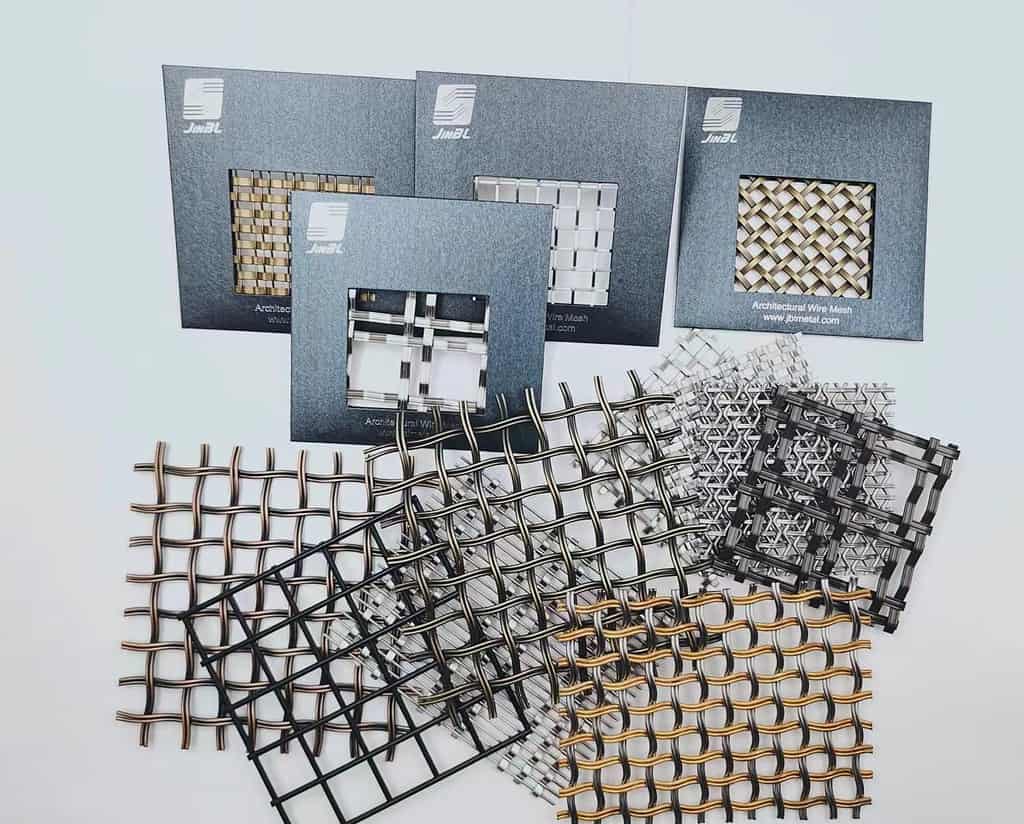1. What is Architectural Metal Mesh?
Architectural metal mesh refers to a versatile material that combines functionality, aesthetics, and sustainability. It is commonly used in various architectural and design applications, including parkings. The mesh is created by interweaving metal wires to form a flexible and durable fabric-like structure. Its unique characteristics make it an excellent choice for enhancing the visual appeal and performance of parkings.

2. Benefits of Using Architectural Metal Mesh in Parkings
Architectural metal mesh offers numerous advantages when incorporated into parkings. Let's explore some of the key benefits:
- Enhanced Aesthetics: The use of architectural metal mesh adds a modern and stylish touch to parkings, transforming them into visually striking structures.
- Natural Ventilation and Sunlight: The mesh allows for natural airflow and light penetration, creating a more comfortable and sustainable parking environment.
- Solar Heat Gain Reduction: By incorporating architectural metal mesh, parkings can reduce solar heat gain, leading to energy savings and improved thermal comfort.
- Privacy and Security: Depending on the mesh's aperture size, it can provide privacy without compromising the overall openness of the parking structure. Additionally, it can serve as a security feature by preventing unauthorized access.
- Durability and Longevity: Architectural metal mesh is highly durable, resistant to corrosion, and built to withstand harsh weather conditions, ensuring long-term performance and minimal maintenance requirements.

3. Applications of Architectural Metal Mesh in Parkings
The versatility of architectural metal mesh allows for various applications in parkings. Some common uses include:
- Façade Cladding: Architectural metal mesh can be utilized as an eye-catching cladding material for parking facades, adding texture, depth, and uniqueness to the overall design.
- Sunshades and Canopies: The mesh can be shaped into sunshades and canopies, providing shading and protection against the elements while maintaining an open and inviting parking space.
- Partitions and Screens: By incorporating metal mesh partitions and screens, parkings can delineate different areas, create visual interest, and manage traffic flow effectively.
- Signage and Branding: Architectural metal mesh can be customized to display signage and branding elements, reinforcing the parking structure's identity and enhancing wayfinding for visitors.

4. Types of Architectural Metal Mesh
Architectural metal mesh comes in various types, each with its own unique characteristics and applications. Here are some commonly used types of architectural metal mesh:
- Woven Mesh: Woven mesh is created by interlacing metal wires in an over-and-under pattern, resulting in a visually appealing and highly durable mesh structure. It is suitable for both interior and exterior applications.
- Expanded Mesh: Expanded metal mesh is produced by cutting and stretching a solid sheet of metal, creating a mesh with diamond-shaped openings. This type of mesh offers excellent strength and is often used for security purposes in parkings.
- Perforated Mesh: Perforated metal mesh features regularly spaced holes that provide varying degrees of transparency, ventilation, and visual effects. It is ideal for creating intricate patterns and designs.

5. How to Choose the Right Architectural Metal Mesh for Parkings
Selecting the appropriate architectural metal mesh for parkings requires careful consideration. Here are some factors to keep in mind during the decision-making process:
- Purpose: Determine the primary purpose of the mesh installation. Is it for aesthetics, sun protection, security, or a combination of these factors?
- Material: Choose a metal material that suits the design requirements, durability needs, and the surrounding environment of the parking structure. Common options include stainless steel, aluminum, and bronze.
- Aperture Size: Consider the desired level of transparency, privacy, and airflow required for the specific parking area. Smaller aperture sizes offer greater privacy, while larger sizes provide better visibility and ventilation.
- Finishes: Architectural metal mesh can be finished in various ways, including powder coating, anodizing, and painting. Select a finish that complements the overall design concept and enhances the mesh's durability.

6. Installation Process of Architectural Metal Mesh in Parkings
The installation process of architectural metal mesh in parkings involves several steps to ensure a successful outcome. Here's a general overview of the installation process:
- Site Assessment: Conduct a thorough assessment of the parking structure to determine the installation requirements, including measurements, fixing points, and any potential challenges.
- Design and Customization: Collaborate with experienced architects and designers to create a customized design that integrates the architectural metal mesh seamlessly into the parking structure.
- Fabrication: The chosen metal mesh is fabricated according to the approved design, taking into account the specific measurements and architectural details.
- Framework Preparation: Prepare the framework or substructure that will support the metal mesh. This step involves ensuring proper anchoring points, stability, and structural integrity.
- Installation: Carefully install the architectural metal mesh onto the framework, ensuring proper alignment, tension, and fixation. Professional installation teams follow industry best practices and safety guidelines.
- Quality Assurance: Conduct thorough inspections to ensure the installed mesh meets the desired standards of quality, aesthetics, and functionality.
- Finishing Touches: After the installation, make any necessary adjustments and perform final finishing touches to ensure a flawless appearance and optimal performance.
7. Maintenance and Cleaning Tips for Architectural Metal Mesh
To maintain the pristine condition and longevity of architectural metal mesh in parkings, regular maintenance and cleaning are essential. Follow these tips for effective upkeep:
- Regular Inspections: Conduct periodic inspections to identify any signs of damage, such as loose wires, corrosion, or bent sections. Address these issues promptly to prevent further deterioration.
- Gentle Cleaning: Use a soft brush or cloth to remove dust and debris from the mesh surface. Avoid abrasive materials or harsh chemicals that could damage the mesh or its finish.
- Mild Detergents: When necessary, clean the mesh with a mild detergent solution and warm water. Gently scrub the surface, rinse thoroughly, and allow it to air dry.
- Preventive Measures: Implement preventive measures, such as applying protective coatings or sealants, to enhance the mesh's resistance to corrosion and environmental elements.
Frequently Asked Questions (FAQs)
- Can architectural metal mesh be used for security purposes?
Absolutely! Architectural metal mesh can serve as a reliable security solution for parkings. Its durable construction and customizable aperture sizes make it an effective barrier against unauthorized access.
- Is architectural metal mesh environmentally friendly?
Yes, architectural metal mesh is environmentally friendly. It is typically made from recyclable materials, such as stainless steel or aluminum, and can contribute to sustainable building practices.
- How long does architectural metal mesh last?
The lifespan of architectural metal mesh depends on various factors, including the material, installation quality, and maintenance. With proper care, it can last for decades while maintaining its aesthetic appeal and functionality.
- Can architectural metal mesh be customized for different design requirements?
Certainly! Architectural metal mesh is highly customizable. It can be tailored to meet specific design requirements, including aperture size, pattern, color, and texture, allowing for endless creative possibilities.
- Is architectural metal mesh suitable for both indoor and outdoor parkings?
Yes, architectural metal mesh is suitable for both indoor and outdoor parkings. It is designed to withstand diverse environmental conditions, including exposure to sunlight, moisture, and temperature fluctuations.
- What are the cost considerations for using architectural metal mesh in parkings?
The cost of architectural metal mesh installation depends on factors such as the size of the parking area, complexity of the design, chosen material, and additional customization requirements. It is recommended to consult with experienced professionals for accurate cost estimates based on specific project needs.
Conclusion
In conclusion, architectural metal mesh offers a multitude of benefits and applications in parkings. Its unique combination of aesthetics, functionality, and durability makes it an excellent choice for architects and designers seeking innovative solutions. Whether used for façade cladding, sunshades, partitions, or signage, architectural metal mesh enhances the visual appeal, sustainability, and security of parkings. By selecting the right type of mesh, following proper installation practices, and implementing regular maintenance, parkings can elevate their design and create memorable spaces that prioritize both form and function.





